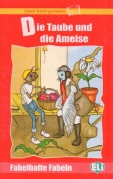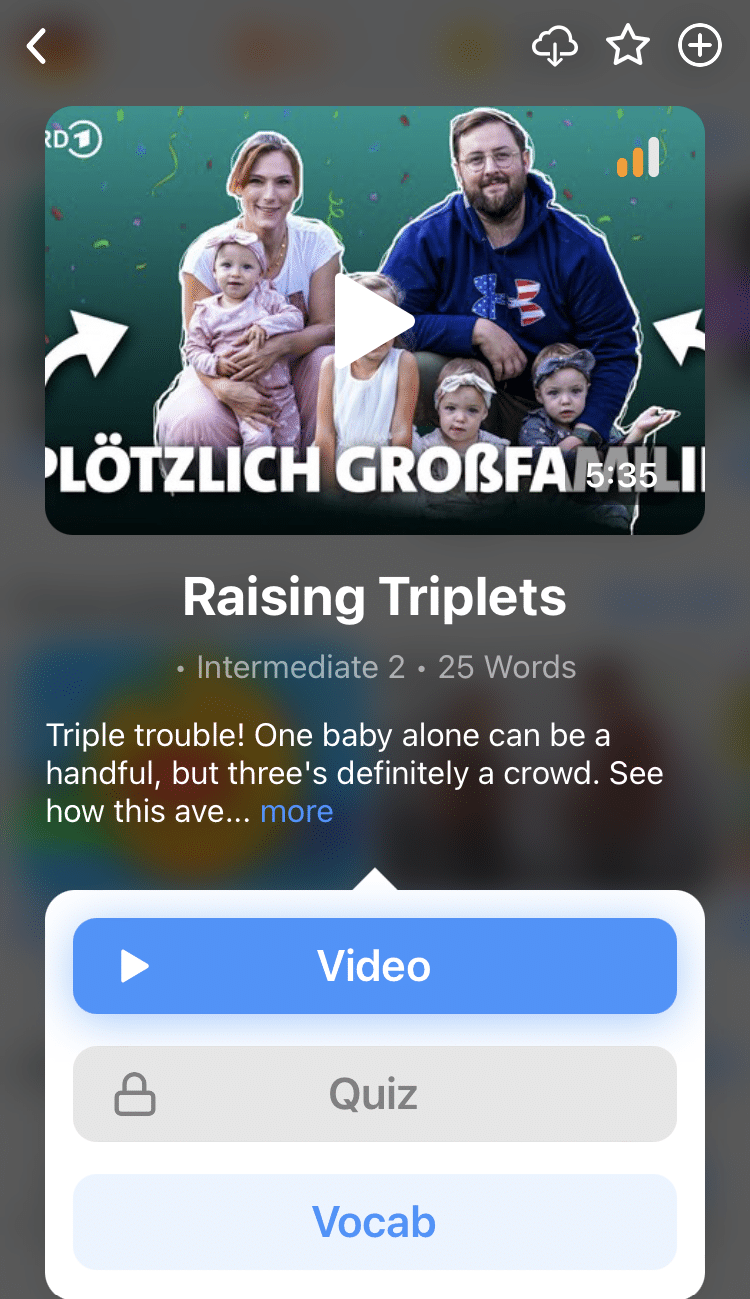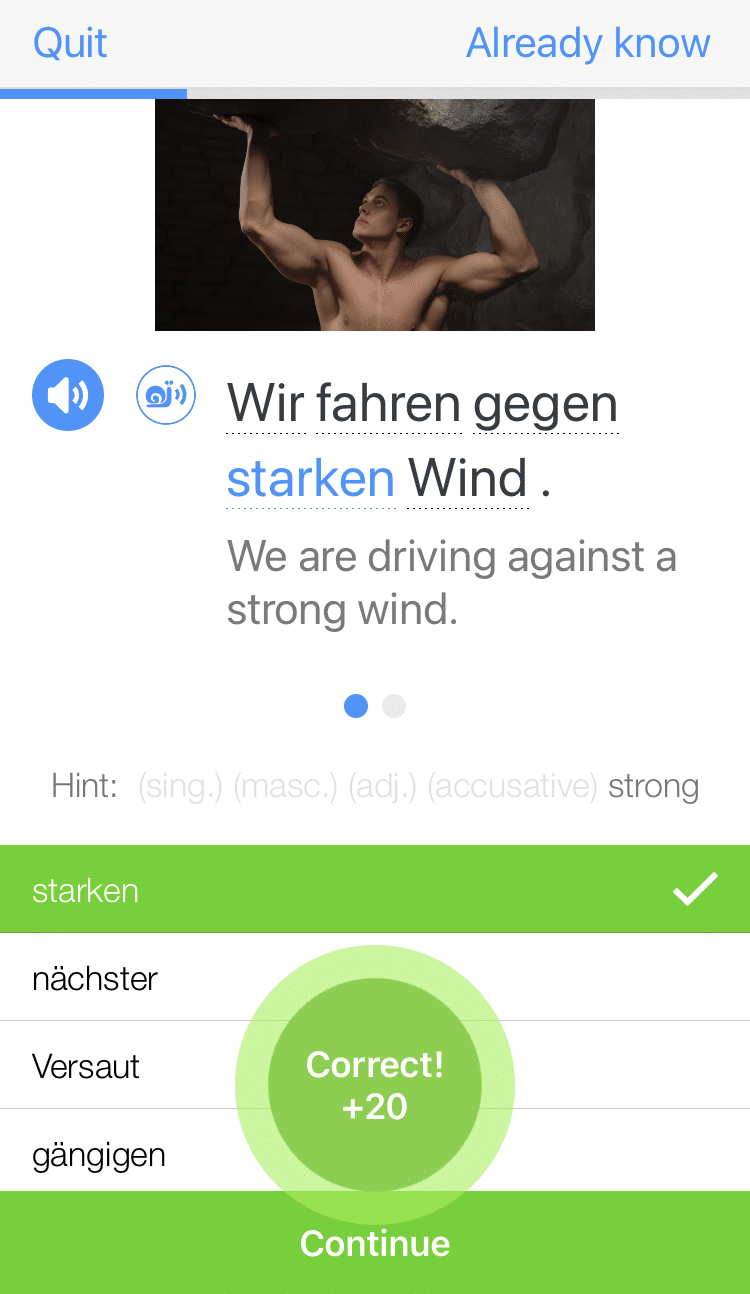
24 German Books for Beginners: Easy Reads from a Range of Genres
Literature is a great way to instantly immerse yourself in German culture and keep building up your grammar and vocabulary.
However, it can sometimes be challenging to find books that are just right for your level.
Read on to discover 24 easy German books—ranging from classic children’s tales to easier adult books—that will help make your German wunderbar.
Contents
- German Books for Beginners
- 1. “Emil und die Detektive”
- 2. “Tintenherz”
- 3. “Die unendliche Geschichte”
- 4. “Schachnovelle”
- 5. “Der Schwarm”
- 6. “Mario und der Zauberer”
- 7. “Krücke”
- 8. “Bergkristall”
- 9. “Münchhausens Abenteuer”
- 10. “Das doppelte Lottchen”
- 11. “Heidi”
- 12. “Bestattung eines Hundes”
- 13. “Dorfpunks”
- 14. “Tommy Jaud”
- 15. “Lesen Leicht Gemacht – Fabelhafte Fabeln”
- 16. “Deutsche Märchen und Sagen”
- 17. “Café in Berlin”
- 18. “First German Reader: A Beginner’s Dual-language Book”
- German Books for Lower Intermediate Learners
- How to Make the Most of Reading an Easy German Book
- Where Can You Find an Easy German Book?
- And One More Thing...
Download: This blog post is available as a convenient and portable PDF that you can take anywhere. Click here to get a copy. (Download)
German Books for Beginners
1. “Emil und die Detektive”
“Emil und die Detektive” is a book from 1929 that follows the story of Emil, a boy who leaves a provincial German town and travels to Berlin with a small amount of money in his pocket. He is robbed on the train, and once he arrives in Berlin he must track down his stolen money with the help of a group of private eyes that call themselves The Detectives.
Besides being a classic German children’s story, this tale will provide you with a glimpse of Berlin at the time of the Weimar Republic, when the city was a capital of art, crime and cabaret. “Emil und die Detektive” is known for its realistic characters and unflinching descriptions of an often cruel and gritty world.
2. “Tintenherz”
Originally from North Rhine-Westphalia, Funke now lives and writes in Beverly Hills. She’s known for her adventure and fantasy YA books.
As her stories are aimed at young adults, the language is easy to master. Plus, all of her books have been translated into English, so you could always grab an English copy as well, just in case you get bogged down in all the German.
Not sure which of Funke’s works to start with? Go for any of the books in Funke’s “Tintenherz” trilogy (the first book in this series was turned into a movie). They’ve all received glowing reviews from The New York Times Book Review.
3. “Die unendliche Geschichte”
“Die unendliche Geschichte tells the tale of a young boy named Bastian who discovers a book in an antique store and becomes sucked into a fantastical tale that repeats itself over and over again.
The book was adapted into a famous American film in the 1980s. Although the film differs greatly from the book, if you’ve already seen it and are somewhat familiar with the story, this book could be a great choice for you to hone your German skills. It’s also ideal for anyone who likes fantastical literature and themes and would like to learn German vocabulary for words that often appear in Tolkien-esque realms.
4. “Schachnovelle”
“Schachnovelle” is no children’s book; this novella delves into dark psychological and historical themes and was completed shortly before the author’s suicide in the 1940s. But Stefen Zweig is a famous writer, having published dozens of fiction and non-fiction works before his death, and this is still a classic of German literature.
As a novella, it’s manageable for language learners. The book follows the tale of a monarchist living in Austria shortly after the Nazi occupation; under the Nazis, supporters of the Habsburgs in Austria were persecuted and sentenced to death. The monarchist maintains his sanity only through losing himself in the world of chess.
This book is an ideal choice for anyone who wants to cross Zweig off their list of authors to read, or anyone who wants to learn about this dark period of German and Austrian history. It contains lots of vocabulary that involves psychology and psychiatry.
5. “Der Schwarm”
“Der Schwarm” is a modern book, published in 2004 and staying on the #1 bestseller list in Germany for eight months.
It’s an apocalyptic science fiction tale in which the earth’s marine creatures rise up against humans: Whales, undersea worms, jellyfish and sharks wreak havoc on humankind, until scientists discover that these creatures are being controlled by an unknown sentient entity called the “yrr.” A good choice for science fiction fans, fans of more modern literature or learners who want to study modern German dialogue and interactions.
6. “Mario und der Zauberer”
Thomas Mann is one of the most famous and most prolific German authors. But “Mario und der Zauberer” is a novella, so if you want to take on something lighter but still say you’ve read Thomas Mann, this is the way to go. Besides, it’s a political allegory about the rise of fascism in the 1920s, so for the history buffs among you, this is an ideal read.
In the book, Mario, the narrator, describes a trip to Italy, where he meets a hypnotist named Cipolla, who uses his powers to control the people in a very fascist manner. This book is ideal for anyone interested in the politics or history of 1920s Europe, and will teach you plenty of historical and political vocabulary.
7. “Krücke”
Peter Härtling is a renowned German children’s book author, but “Krücke” deals with anything but childish themes. This is a book about a nine-year-old named Thomas who loses his mother in the chaos of refugee life following the Second World War and must journey to his aunt’s house in Vienna.
Krücke paints a picture of life in this chaotic time, dealing with issues such as cities reduced to rubble by bomb attacks and the black market that sprang up in Europe in the wake of the war. Ideal for anyone interested in a portrayal of life at this crucial point in history, and like “Mario,” it teaches plenty of political and historical vocabulary.
8. “Bergkristall”
This is a classic Austrian novella about two village children lost on a glacier on Christmas Eve. It’s available simplified to an A2 level.
The book recounts a suspenseful story in which two children, Sanna and Konrad, attempt to travel home from their grandparents’ house on Christmas Eve, become lost in a snowstorm and spend the night in the wilderness wondering if they’ll ever see their family again.
This book will give you a taste of what life was like in the Austrian Alps in the 19th century—plus, it’ll teach you all the vocabulary you’ll need for traveling in Germany’s beautiful mountain regions.
9. “Münchhausens Abenteuer”
Ever heard of Münchhausen syndrome, the disorder where a person makes up fabulous lies about themselves for attention?
That syndrome was named after Baron Münchhausen, a fictional character based on a real baron and his exploits in the 17th century. In “Münchhausens Abenteuer,” which is available in level A1/A2, Münchhausen kills a lion by forcing a crocodile to eat it, hires a man who pulls down an entire forest with a rope and then travels the whole world. There’s never a dull moment in his tall tale style adventures.
10. “Das doppelte Lottchen”
This book, about twins who are separated at birth, meet as young adults at summer camp, and scheme to get their parents back together, has inspired dozens of movie adaptations. In the original story, the twin girls, named Lottie and Lisa, come from Munich and Vienna, and switch places at the end of the summer so they can experience each others’ lives. Hijinks ensue.
Even if you never saw the 1998 movie “Parent Trap,” this story is sure to captivate your attention and your heart.
11. “Heidi”
Remember the Shirley Temple film version of “Heidi”?
Whether you do or don’t, this classic story of a young girl named Heidi growing up in the Swiss mountains will certainly either remind you of childhood memories or introduce you to an integral classic German tale.
Like “Bergkristall,” this story introduces plenty of vocabulary that’s sure to be helpful if you travel in one of the mountainous Germanic regions.
12. “Bestattung eines Hundes”
If you’re slightly apprehensive about the language gap between YA and adult fiction, Pletzinger is the author for you.
His innovative and prize-winning novel, “Bestattung eines Hundes” tells the story of a reclusive children’s author Dirk Svensson through a collection of easy-to-read postcards, letters and notes.
An excellent book for those who love to travel. The intriguing plot changes setting often as the story travels across continents.
13. “Dorfpunks”
Tobias Albrecht acts, makes music and writes under his pseudonym Rocko Schamoni. His books are often a tongue-in-cheek critique of modern society.
Schamoni’s writing is fast-paced yet uses straightforward language. He’s a great author for any level of German. His second novel, “Dorfpunks,” is an autobiographical tale about growing up in a small village and was a hit across Germany, so much so that it even got turned into a movie.
Once you’re done with the book, you can watch it on the big screen and try out your German listening skills. Another great thing about “Dorfpunks” is the fact that chapters are no longer than 4 pages. These bite-sized chunks are great when you need a quick burst of German reading practice.
14. “Tommy Jaud”
Der Spiegel has celebrated Jaud for bringing back German men’s novels.
What’s great about Jaud’s novels is that they’ve all been recorded as German audiobooks. If you’re not all that into picking up a book, you can always grab a copy of the audio version!
His critically acclaimed novel “Vollidiot” tells the story of unlucky-in-love Simon Peters as he tries to woo the girl of his dreams, often resulting in hilarious consequences.
This comical story has also been made into a movie with German comedian Oliver Pocher taking the lead role.
15. “Lesen Leicht Gemacht – Fabelhafte Fabeln”
This is actually a series of simplified fables, adapted from Phaedrus, Aesop and La Fontaine, and is ideal for beginners who have never read a German book.
Fables include classics like “Der Hund und sein Schatten” (“The Dog and His Shadow”), “Die Ameise und die Grille” (“The Ant and the Cricket”) and “Knaben und Frosche” (“The Boys and the Frogs”). Whether they talk about ants, frogs or crickets, these profound yet minimal tales are sure to leave you thinking about some of the most common human follies.
Each title in this series comes complete with an audio CD, vocabulary, illustrations and exercises.
16. “Deutsche Märchen und Sagen”
This short book of children’s stories, legends and sayings is simple enough that beginners can approach it without fear. Vocabulary is included in the back of the book, rather than as footnotes, a format you may find less intrusive.
“Deutsche Märchen und Sagen” (“German Fairytales and Stories”) allows readers to learn and practice basic German as they follow the familiar plotlines of stories like “Hänsel und Gretel,” “Aschenputtel” (“Cinderella”) and “Schneewittchen” (“Snow White”), ponder over the fate of Doctor Faust or experience the mysterious tale of Barbarossa’s ghost.
17. “Café in Berlin”
 “Café in Berlin” is specially designed for language learners. The premise is simple: a hapless Italian arrives in Berlin and has to manage to communicate, survive and have a good time.
“Café in Berlin” is specially designed for language learners. The premise is simple: a hapless Italian arrives in Berlin and has to manage to communicate, survive and have a good time.
The idea is to present the common struggles of the language learner through a simple and realistic plotline. The result is both entertaining and educational.
This book is ideal for those looking for a more learning-oriented experience.
18. “First German Reader: A Beginner’s Dual-language Book”
 This book offers German originals and English translations of amazing short texts by some famous German language writers side-by-side. Featuring the likes of Goethe, Hesse, Hölderlin, Schiller and Heine, the authors’ index is a veritable “who’s who” of German literature. The texts, which include poems, short stories and essays, are carefully selected based on quality and accessibility.
This book offers German originals and English translations of amazing short texts by some famous German language writers side-by-side. Featuring the likes of Goethe, Hesse, Hölderlin, Schiller and Heine, the authors’ index is a veritable “who’s who” of German literature. The texts, which include poems, short stories and essays, are carefully selected based on quality and accessibility.
The “First German Reader” is the type of book you may enjoy if you rank among the more adventurous of beginners.
Have you ever wondered what Hamlet might sound like in German? Aside from German classics, this book also includes Shakespeare’s most famous monologue. In addition, you get a beautiful poem by Goethe, a lovely little slice of spirituality by the popular Herman Hesse and many other exciting works.
German Books for Lower Intermediate Learners
19. “Learning German Through Storytelling”
 This is actually a series of books specially designed for English speakers. Each one of them features a vocabulary list and some grammar and comprehension exercises at the end of every chapter.
This is actually a series of books specially designed for English speakers. Each one of them features a vocabulary list and some grammar and comprehension exercises at the end of every chapter.
The most popular book in the series is “Mord am Morgen” (“Murder in the Morning”), a detective novel (what Germans call a Krimi). It has a simple, yet attractive storyline involving a mysterious dead body and two sly detectives trying to find a killer (Kommissar Harald Baumgartner and his colleague Katharina Momsen).
If you are a fan of the genre, you may be thrilled to meet Kommissar Baumgarten and Frau Momsen once more in the popular “Die Dritte Hand” (“The Third Hand”), in which the pair are faced with body parts turning up in different locations and must put the pieces of the puzzle together, though not literally speaking, of course.
Other detective stories in the collection featuring the same characters include “Zum Bärenhaus,” a murder mystery involving a panda bear, and “Heidis Frühstuck” (“Heidi’s Breakfast”), which starts with a loyal dog entering his home with a human ear between his teeth!
This series promises a combination of learning and entertainment that the included titles generously provide. If mystery and crime aren’t your thing, try one of the series’ interactive adventure stories: “Shanima” or “Genowrin.”
20. “Momo” by Michael Ende
This book, by the author of “The Neverending Story,” was originally written for children and young adults. Thus, the language is simple enough for intermediate and lower intermediate learners.
Momo, the protagonist, is a homeless princess who has a magical power to listen to others, in spite of her many misfortunes. The book is ultimately an exploration of what makes life worth living.
In spite of its linguistic simplicity, Momo has a profound spiritual message that adults can truly appreciate.
21. “Homo Faber” by Max Frisch
 Swiss author Max Frisch is one of the greatest German language writers of all time. While some of his fiction may appear too complex for language learners, “Homo Faber” is pretty accessible.
Swiss author Max Frisch is one of the greatest German language writers of all time. While some of his fiction may appear too complex for language learners, “Homo Faber” is pretty accessible.
A re-interpretation of the myth of Oedipus (though substituting daughter-father for son-mother), the story is narrated in the first person by a very rational character with a scientific mind, who sees his beliefs challenged by a series of unlikely coincidences.
There is an excellent movie based on this book, starring Sam Shepard. Whether you watch the movie first to simplify the reading or read the book first because you enjoy the challenge, the works can certainly complement each other.
22. “Der Kontrabass” by Patrick Süskind
Patrick Süskind has become world famous thanks to his novel “Das Parfüm.” Very few people who read that bestseller and watched the movie based on it have ever heard of “Der Kontrabass,” and that is a shame.
Personally, I came in contact with this little monologue (in which the central character is, you guessed it, a musical instrument), long before reading “Perfume.” My German level was lower-intermediate at the time, and I stumbled upon an audiobook tape at the Goethe Institut library. With my limited knowledge of German, I was able to understand and enjoy the audiobook; it is extremely accessible for intermediate learners.
“Der Kontrabass” is a fabulous book. The double bass—which nobody ever notices in the orchestra, because its sound is usually buried under layers and layers of higher-pitch instruments—complains about its miserable life in a monologue that covers much more than the hierarchy of musical instruments.
Few authors have mastered the art of the one-act play like Süskind does in this marvelous work.
23. “Der Vorleser” by Bernard Schlink
Who hasn’t seen the Hollywood film “The Reader”? Fortunately for you, the film shall in no way ruin your experience of the evocative narrative it was based on by Bernard Schlink.
“Der Vorleser” is a masterpiece, but its value owes very little to linguistic innovation, and a lot to the power of a simple yet unique story.
In the book, a teenager has an affair with an older woman. Years later, while studying law, he comes across the same woman as she is being accused of a terrible crime committed during the Nazi regime. A secret the man learns can prove the woman’s innocence and save her from prison, but revealing the secret turns out to be more complicated than he had anticipated.
Prose like Schlink’s is always a pleasure. For language learners, it has the added pleasure of accessibility.
24. “Der Besuch der alten Dame” by Friedrich Dürrenmatt
This book, by one of Germany’s classic authors, tells a simple story in simple language. When a billionaire returns to her hometown, the whole town—which has fallen into deep economic troubles—believes the woman’s arrival may solve all their problems. The plot gets complicated when the rich woman asks for someone’s life in exchange for her generosity.
How to Make the Most of Reading an Easy German Book
Not all reading methods are created equal. Follow these tips to make sure you get the most out of your reading.
Use a German-to-German dictionary
It’s tempting to look up each and every word you don’t know using Google Translate, isn’t it? But by learning new words by translating them into English, you’re simply perpetuating your status as a beginning language learner. Using a German-to-German dictionary will help you learn the words within the context of the language, which will only improve your knowledge of Deutsch.
Make flashcards
Learning a word in context can do wonders to help you remember it—but it’s even better if you hammer the word home by writing it down on a flashcard. If you make a vocabulary set from every book that you read, soon you’ll have a big stack (or a large file, if you’re using an app) of words to memorize and integrate into your vocabulary.
Listen along
Learning how to read in German is essential, but so is learning how to comprehend. Find your book as an audiobook as well, and you’ll be able to listen to each chapter as you read it. If you listen after reading, you’ll already know the story, and it will be easier to understand what the narrator is saying in the audio version. This is a great way to hone your comprehension skills.
Many of the books introduced in the list below are available as audiobooks online (including “Mario und der Zauberer” and “Krücke.”
Practice with other resources
You don’t have to start with books when you’re first learning to read in German. In fact, you don’t even need to start with short stories. You can start with a three-minute clip of authentic, subtitled German.
Watching videos and following along with the captions trains your reading skills. This way, every video you watch helps you to practice. (And this improves your listening comprehension, too).
For short video clips from authentic German media—movie trailers, news segments, music videos, etc.—complete with interactive subtitles and other learning tools, check out the immersive language learning program FluentU.
Where Can You Find an Easy German Book?
Don’t live near a German-language bookstore? Never fear. You can easily order books online.
1. Amazon
Amazon.com and Amazon.de can deliver easy German books right to your doorstep.
If you’re keen on finding books digitally, or you’re trying to save money, read up on how to find free German e-books on Amazon and stock up your e-reader with Deutsch.
2. Galda + Leuchter
Galda + Leuchter is a Berlin, Germany and Madison, Wisconsin-based German books supplier. You can search their database and request that they deliver books to you.
3. Dussmann, das KulturKaufhaus
Bookstores are still a large part of the culture and everyday life in Germany, so if you want to support one of these institutions by shopping there, you can order e-books from Dussmann, a giant bookstore on Friedrichstrasse in the heart of Berlin. The store stocks a wide variety of German and English tomes (along with stationery and office supplies).
And for more enjoyable reading material, check out these German graphic novels!
Whether you decide to pick up one of these 24 books or to find your own book to learn German, you should get started on German reading as soon as possible, following the tips above to facilitate your learning process.
There’s nothing like reading fiction to jumpstart learning another language!
Download: This blog post is available as a convenient and portable PDF that you can take anywhere. Click here to get a copy. (Download)
And One More Thing...
Want to know the key to learning German effectively?
It's using the right content and tools, like FluentU has to offer! Browse hundreds of videos, take endless quizzes and master the German language faster than you've ever imagine!
Watching a fun video, but having trouble understanding it? FluentU brings native videos within reach with interactive subtitles.
You can tap on any word to look it up instantly. Every definition has examples that have been written to help you understand how the word is used. If you see an interesting word you don't know, you can add it to a vocabulary list.
And FluentU isn't just for watching videos. It's a complete platform for learning. It's designed to effectively teach you all the vocabulary from any video. Swipe left or right to see more examples of the word you're on.
The best part is that FluentU keeps track of the vocabulary that you're learning, and gives you extra practice with difficult words. It'll even remind you when it’s time to review what you’ve learned.
Start using the FluentU website on your computer or tablet or, better yet, download the FluentU app from the iTunes or Google Play store. Click here to take advantage of our current sale! (Expires at the end of this month.)



























